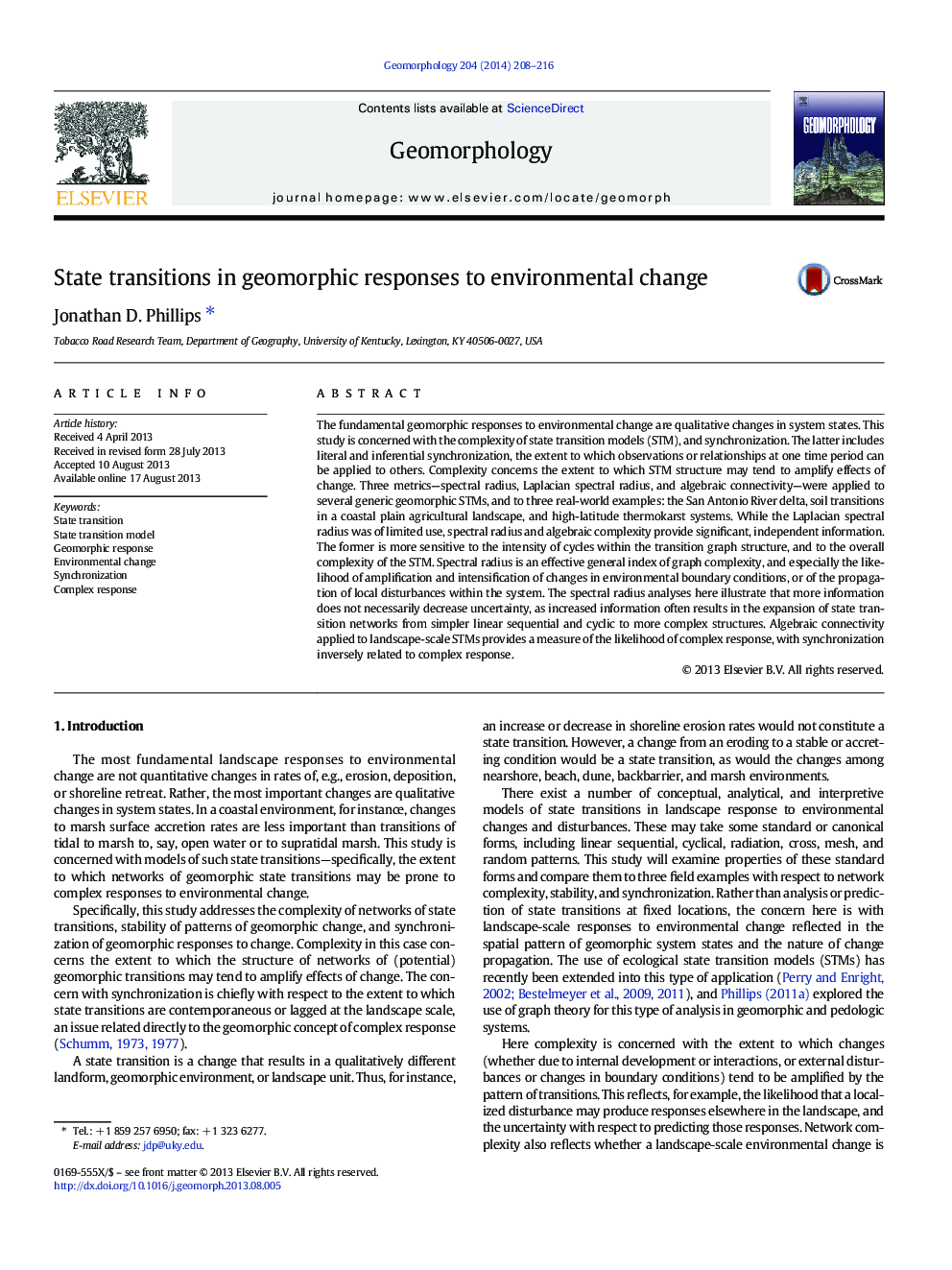| کد مقاله | کد نشریه | سال انتشار | مقاله انگلیسی | نسخه تمام متن |
|---|---|---|---|---|
| 6432721 | 1635445 | 2014 | 9 صفحه PDF | دانلود رایگان |
- State transition models of geomorphic responses to environmental change.
- Complexity, synchronization quantified with spectral radius and algebraic complexity.
- Spectral radius shows that more information may not decrease uncertainty.
- Algebraic connectivity measures likelihood of geomorphic complex response.
- Landscape-wide vs. local drivers of transitions influence whole-network properties.
The fundamental geomorphic responses to environmental change are qualitative changes in system states. This study is concerned with the complexity of state transition models (STM), and synchronization. The latter includes literal and inferential synchronization, the extent to which observations or relationships at one time period can be applied to others. Complexity concerns the extent to which STM structure may tend to amplify effects of change. Three metrics-spectral radius, Laplacian spectral radius, and algebraic connectivity-were applied to several generic geomorphic STMs, and to three real-world examples: the San Antonio River delta, soil transitions in a coastal plain agricultural landscape, and high-latitude thermokarst systems. While the Laplacian spectral radius was of limited use, spectral radius and algebraic complexity provide significant, independent information. The former is more sensitive to the intensity of cycles within the transition graph structure, and to the overall complexity of the STM. Spectral radius is an effective general index of graph complexity, and especially the likelihood of amplification and intensification of changes in environmental boundary conditions, or of the propagation of local disturbances within the system. The spectral radius analyses here illustrate that more information does not necessarily decrease uncertainty, as increased information often results in the expansion of state transition networks from simpler linear sequential and cyclic to more complex structures. Algebraic connectivity applied to landscape-scale STMs provides a measure of the likelihood of complex response, with synchronization inversely related to complex response.
Journal: Geomorphology - Volume 204, 1 January 2014, Pages 208-216
